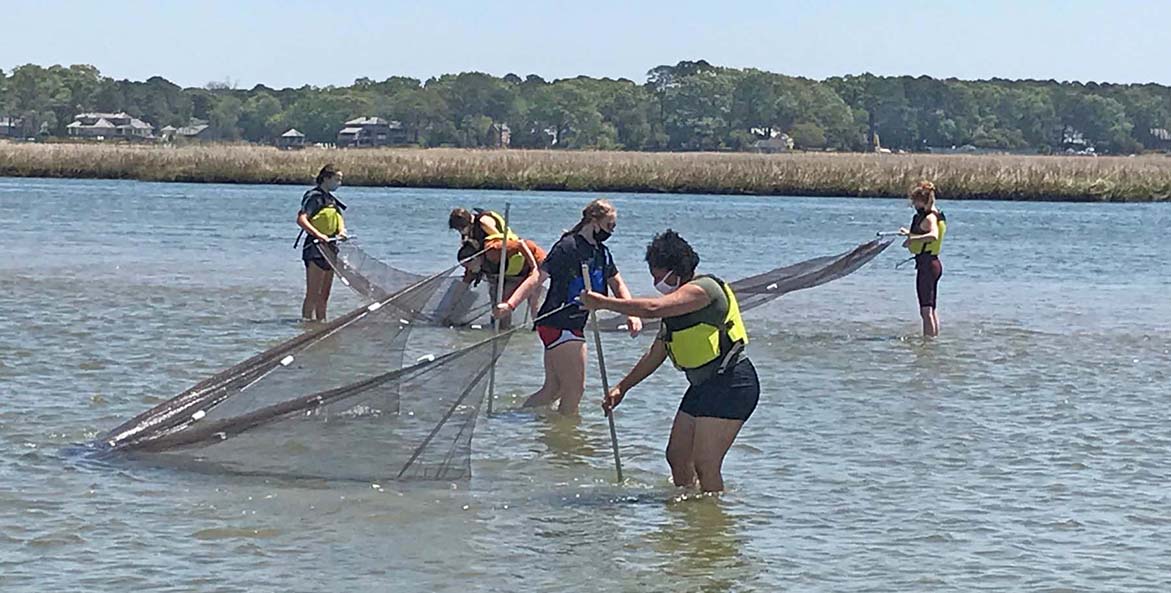Imagine living in the city yet going to school in a sustainable classroom surrounded by forests, marshes, and the Bay. What would it be like if students had hands-on experiences with nature nearly every day? In Virginia Beach, high schoolers are doing just that since the Macon and Joan Brock Classroom opened in April 2021. The new addition to CBF's Brock Environmental Center is home base for juniors and seniors in the Virginia Beach City Public Schools Environmental Studies Program, which just completed its first year (though the classroom opened in April 2021, the program started in September 2020).
The unique collaboration between CBF and a school system allows for both structured and serendipitous learning. Like when the students ran into CBF Senior Scientist Chris Moore, who had just discovered a baby terrapin turtle and was eager to discuss its life cycle. Or the early mornings when students joined the CBF oyster restoration team to load up bags of shells for new oyster reefs. Or the time students helped design and plant the rain garden outside their classroom. Then there are the harbor seals that spent the winter months on the sandbar visible through the building's windows.
When browsing through these scenes from this year, imagine how redefining school can inspire the leaders of tomorrow.
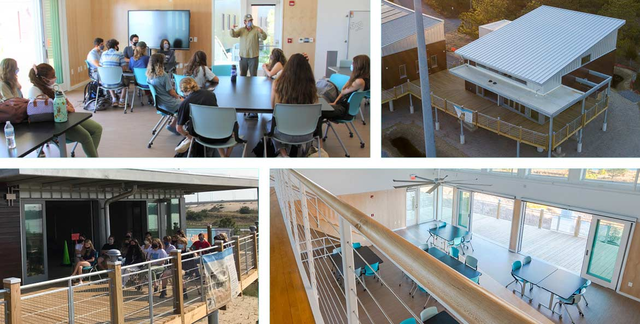
Wyatt Young-American Multimedia Solutions/Kenny Fletcher/Chris Freeman
The classroom itself is a learning tool for sustainable architecture and design that is constructed with reclaimed materials. It also uses sunlight for lighting, natural breezes for ventilation, and employs composting toilets. Electricity comes from solar and wind energy. Drinking water comes from treated rainwater collected from the roof.
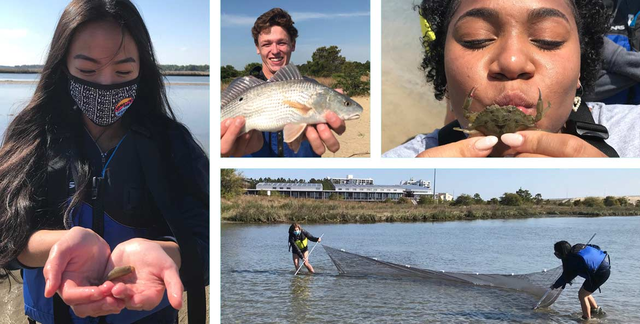
Chris Freeman/Virginia Beach City Public Schools
Regularly, Virginia Beach City teacher Chris Freeman leads the students outside the classroom and into the clear waters of the Lynnhaven River, seine nets in hand. They catch everything from pipefish to blue crabs to red drum, which helps them survey biodiversity and gauge the health of the river.
Because CBF's Virginia oyster restoration team is also headquartered at the Brock Center, there are lots of opportunities for collaboration. Last spring students pitched in to load oyster shells into tanks on CBF's oyster barge and were on hand when oyster larvae were released to set on the shells. Then they tracked the development of the larvae and spat as they grew.
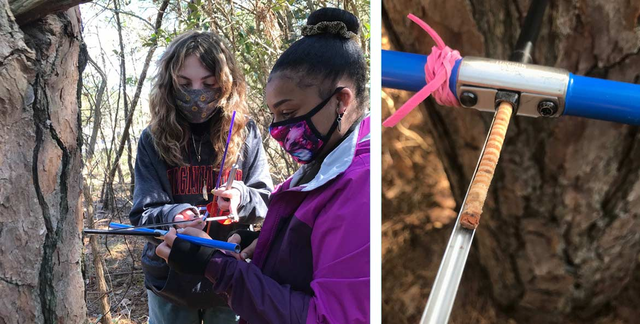
Chris Freeman/Virginia Beach City Public Schools
"In the whipping winds and brambles, hidden in these trees is a story of weather and persistent change documented in rings," Freeman said. He was talking about how student investigations into trees just outside the classroom open a window to the history of Virginia's climate. In the nearby maritime forest, students use specialized increment boring equipment to safely sample tree trunks. This reveals tree growth rings, allowing students to conduct dendrochronological research to uncover historic droughts, storms, and shifting climate trends.
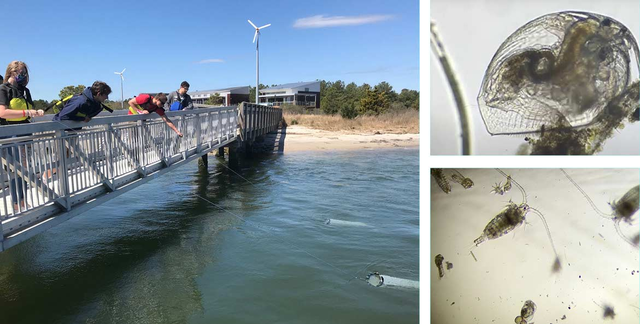
Chris Freeman/Virginia Beach City Public Schools
Off the Brock Center's dock, students use equipment to monitor water quality and deploy a fine mesh net to capture zooplankton. The net floats out with the tide and collects plankton washed by the current. Studying the zooplankton under the microscope opens up a world of hidden aquatic life.
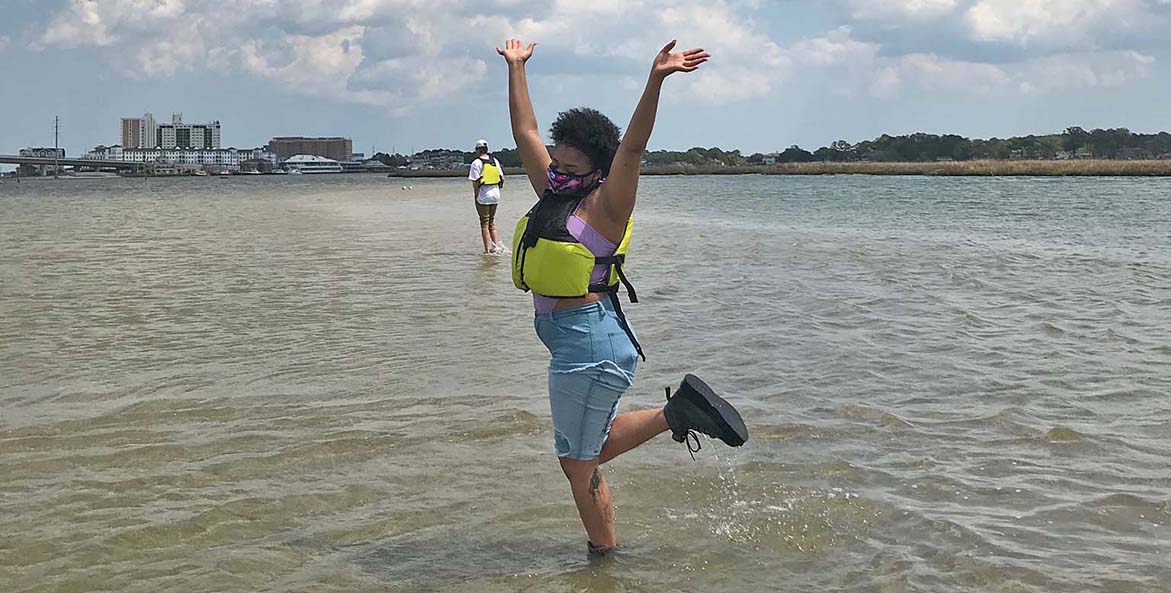
Chris Freeman/Virginia Beach City Public Schools
The new classroom was built thanks to a generous donation from Macon and Joan Brock and is already becoming a model for new ways of learning, with visitors coming from across the region to see it in action. Watching these teenagers investigate and learn over the past year has been amazing, said CBF Brock Center Manager Chris Gorri. "These students want to go out there and change the world. At the Brock Classroom, we're giving them the tools to do just that," Gorri said.


